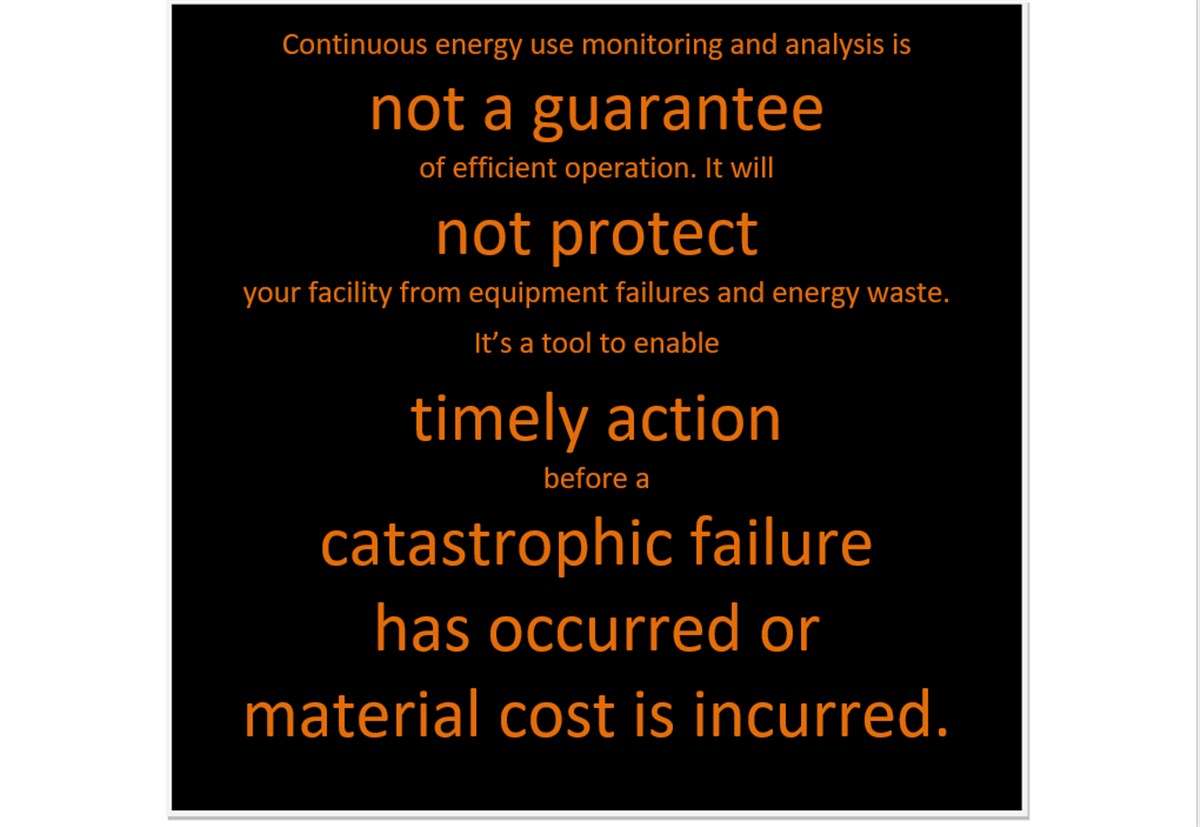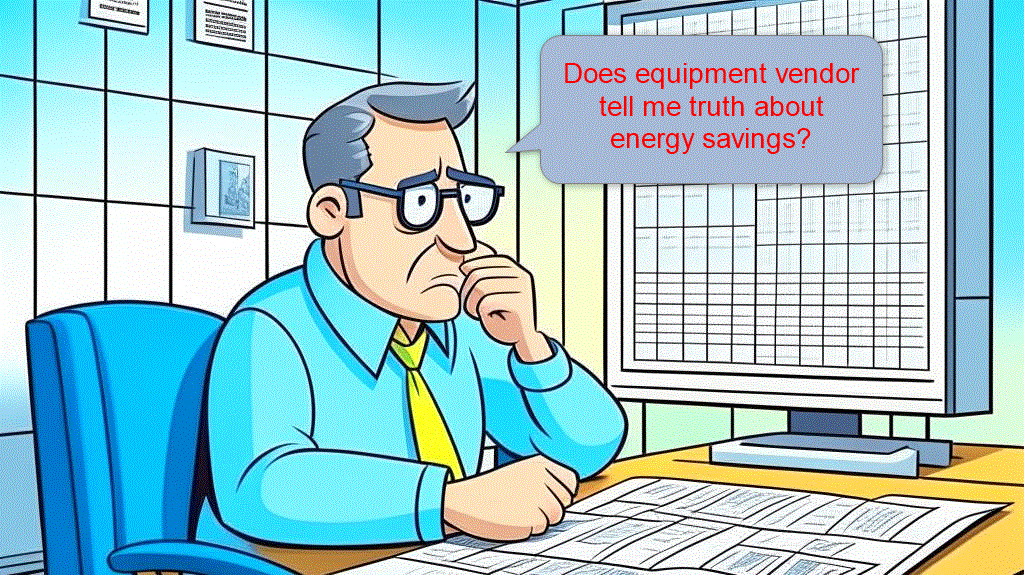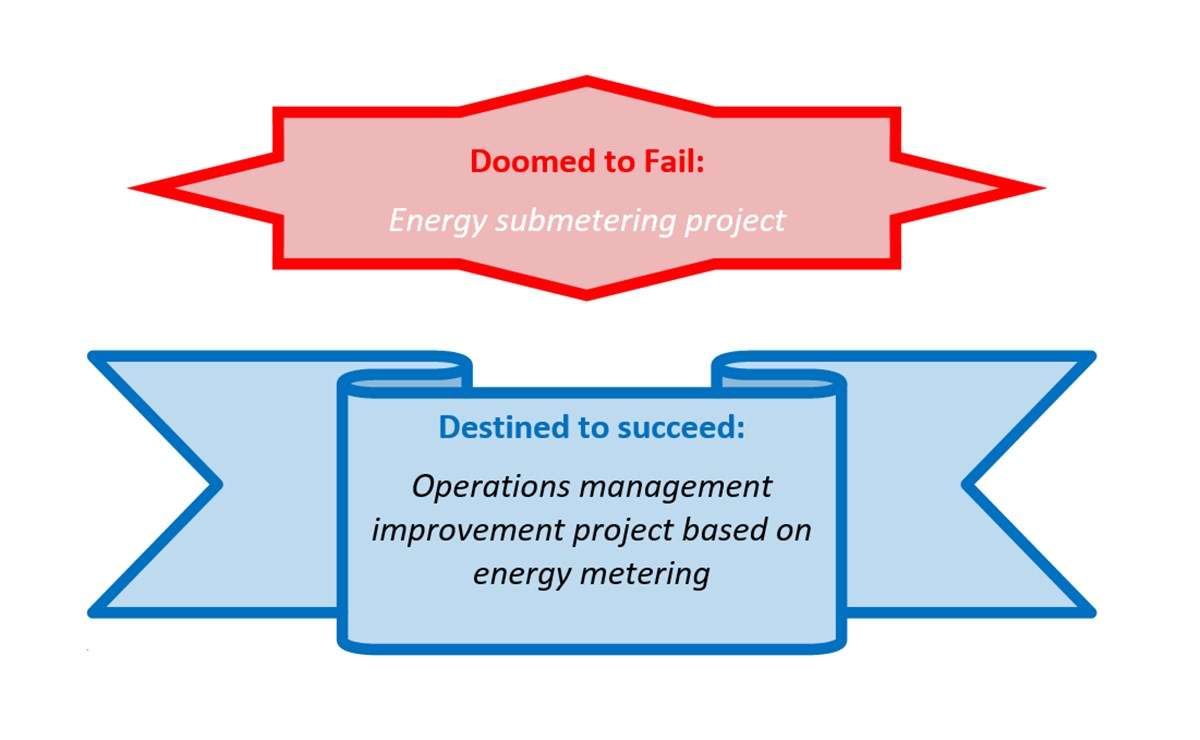Performance of every piece of machinery degraded with time. This may cost your plant thousands of dollars in lost production, rejects, and energy. Recommissioning can solve this problem, but it costs time and money. When is recommissioning worth the effort?
Energy costs of performance degradation
Degradation may be caused by a wide range of factors, such as wear and tear, improper or untimely maintenance, forgotten bypasses and temporary settings, broken sensors, dirt, operator negligence. Through our work we met with thermal sensors in industrial baking oven being out calibration due to negligence of contractor – bread was overbaked for months with an additional cost of $8,000 in natural gas. We also met with an alarm light smashed by a disgruntled employee causing overheating of fat rendering pot – extra costs in natural gas and in electricity to cool fat down the technological line in excess of $15,000.
Recommissioning is a way to fix performance
A solution to degradation problem is recommissioning — an engineering and management procedure through which machinery is brought to its best possible performance. The perceived problem is that recommissioning cost resources – money and labour. Hence the question – When is recommissioning worth the effort?
A financial rule of thumb tells as that:
Recommissioning is worth doing when total return of recommissioning project exceeds company’s financial threshold.
Following this advice may not be as easy as it seems.
Depending on possible cost of poor performance, recommissioning can be as simple as checking settings, cleaning filters and removing forgotten bypasses or it may require a comparison of equipment performance over several years adjusted to production levels only to validate performance. A barely noticeable degradation may cause noticeable costs: a 200hp compressor set to work 10 psi over needed level burns through extra $7,000 per year. If this is insignificant for your plant – would you cut me a cheque for this amount?
For simpler cases – here is a simple procedure to decide if it’s time to recommission your equipment.
Steps to find if it’s time to recommission
- Estimate cost of equipment working out of commission – impact on production throughput, product quality, routine maintenance work, operational availability, energy cost. To do this company must have means to collect equipment performance data over operational cycle and to forecast energy consumption based on expected production level.
- Project costs into future based on expected production volume. Best way to estimate future energy costs do this – use regression analysis.
- Estimate costs of recommissioning – stoppage time, internal labour, contractors, cost of parts.
- Assess the difference between results of Steps 1-2 and Step 3. Apply financial metric that matches the period through which recommissioning will benefit plant – SIR, MIRR, NPV; not a simple payback, which only considers impact through one year.
- If profitability of recommissioning is above company investment threshold – fixing identified issues is a profitable investment.
Most importantly, this probably should have been placed at the top of the list, company must HAVE A WILL TO TAKE ACTION to cut costs.
Too complicated? Too expensive?
Well, the alternative to timely recommissioning is to keep wasting money through lost performance, aka, invest into creating nothing.







Leave A Comment